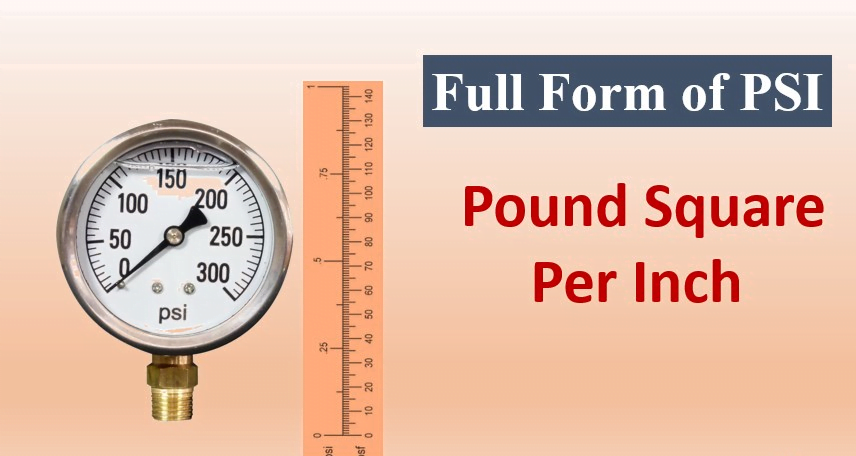
Introduction:
PSI full form: When it comes to measuring pressure, you might have come across the term “PSI” quite often. But what exactly does PSI stand for? In this blog, we’ll delve into the meaning of PSI, its significance, and how it’s used in various contexts.
What Does PSI Stand For?
PSI stands for “pounds per square inch.” It is a unit of pressure commonly used in engineering, physics, and everyday applications. PSI measures the amount of force exerted on a surface area, typically by a fluid (such as air or water) or a solid.
Understanding Pressure Measurement:
Pressure is defined as the force exerted per unit area. In the case of PSI, it represents the amount of force (in pounds) applied to each square inch of the surface. This measurement helps in assessing the force or stress acting on an object or system.
Applications of PSI:
Tire Pressure: PSI is widely used to measure the air pressure in tires. Maintaining the correct tire pressure is crucial for vehicle safety, fuel efficiency, and tire longevity. Automotive manufacturers often provide recommended PSI values for optimal performance.
Pneumatic Systems: In pneumatic systems, such as air compressors and pneumatic tools, PSI is used to regulate and monitor air pressure. It ensures that the system operates within safe limits and delivers the desired performance.
Hydraulic Systems: While PSI is more commonly associated with gas pressure, it is also used in hydraulic systems to measure the pressure of liquids. Hydraulic machinery, like hydraulic brakes and lifts, rely on PSI to function efficiently and safely.
Scuba Diving: Divers use pressure gauges calibrated in PSI to monitor the air pressure in their scuba tanks. Understanding PSI levels is crucial for dive planning and ensuring a safe ascent to the surface.
Converting PSI to Other Units:
While PSI is commonly used in the United States and some other countries, pressure can also be measured using different units, such as Pascals (Pa) or kilopascals (kPa). Here’s a simple conversion:
1 PSI is approximately equal to 6894.76 Pascals (Pa) or 6.89476 kilopascals (kPa).
Conclusion:
In summary, PSI stands for “pounds per square inch” and is a unit of pressure used to measure force per unit area. Whether you’re checking tire pressure, operating pneumatic tools, or monitoring hydraulic systems, understanding PSI is essential for maintaining safety and efficiency in various applications. So, the next time you encounter the term PSI, you’ll know exactly what it means and how it’s relevant to your everyday life.


